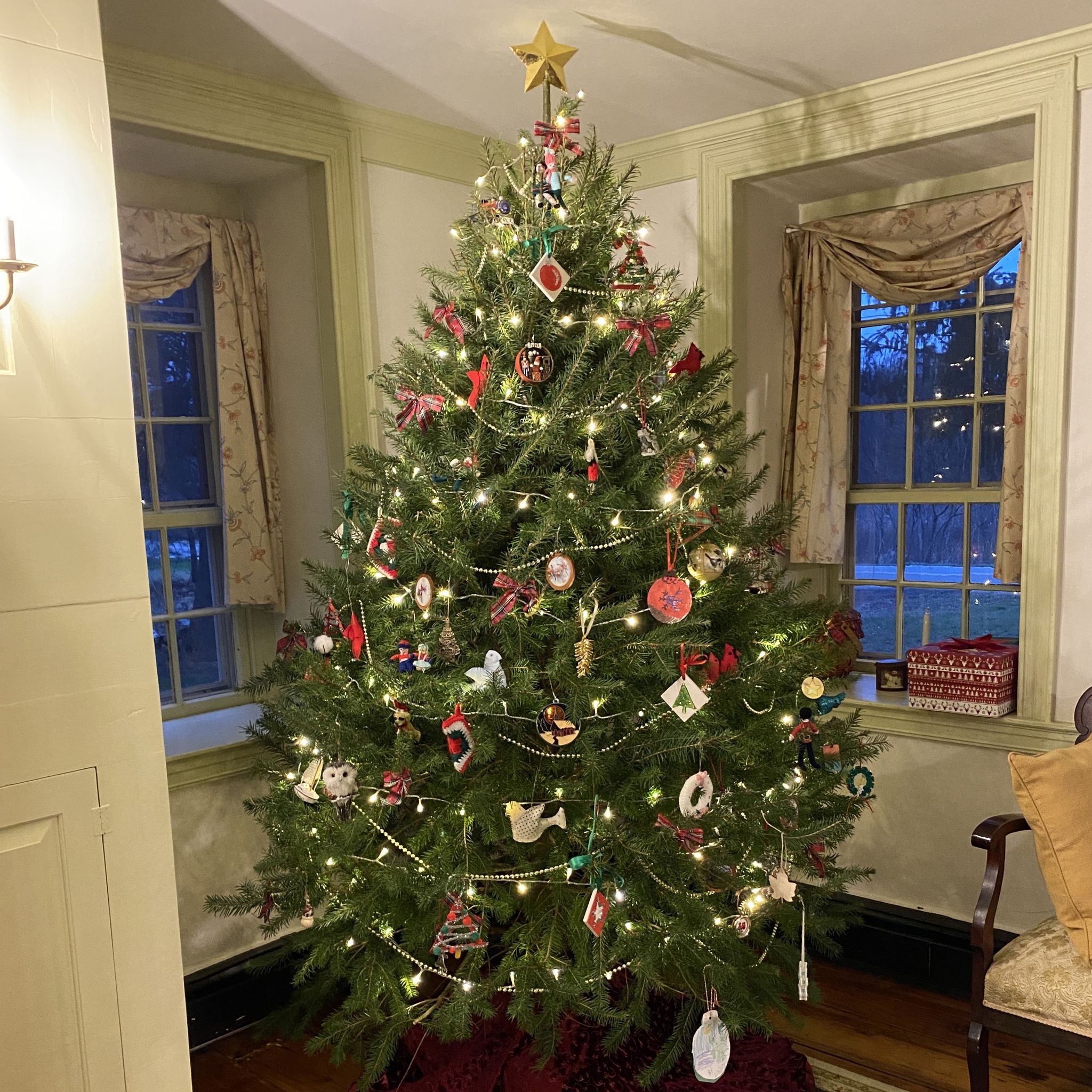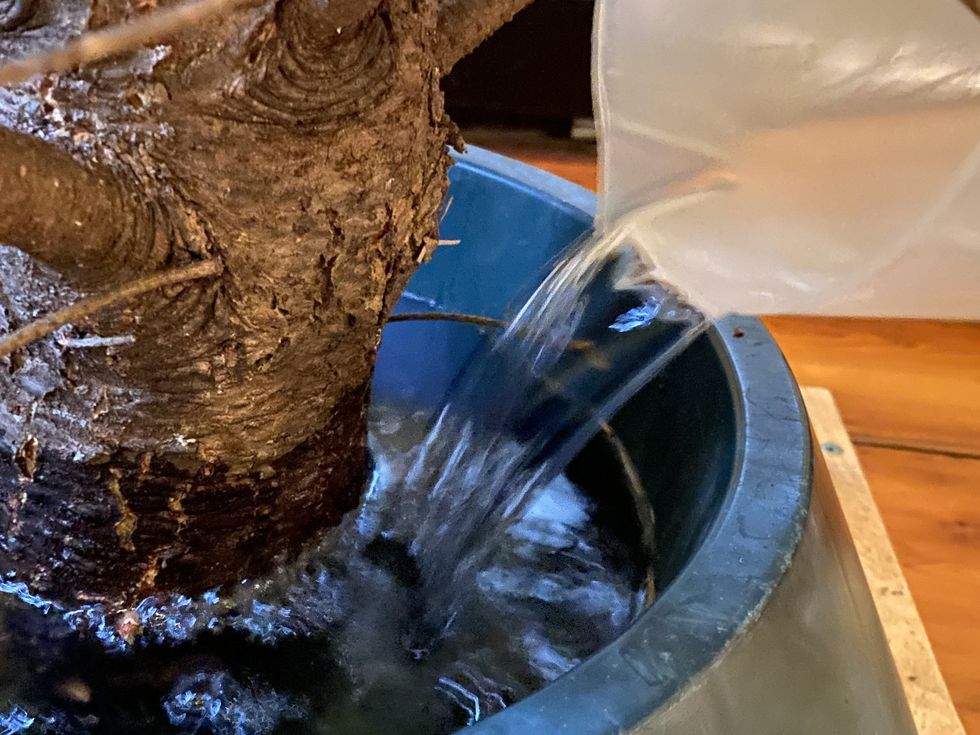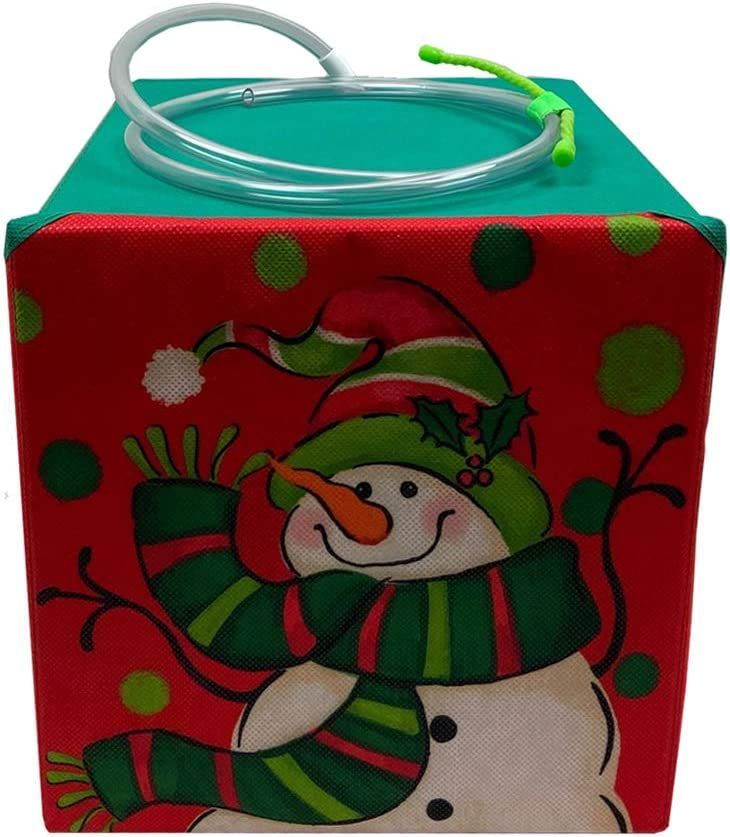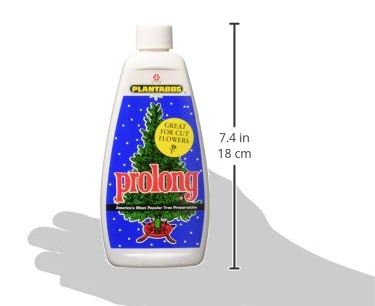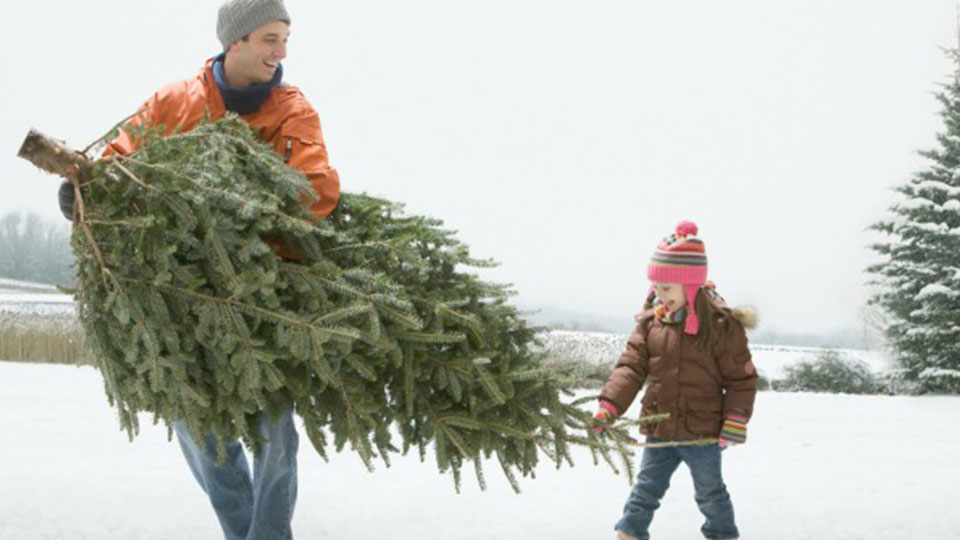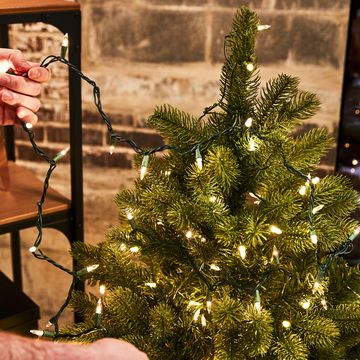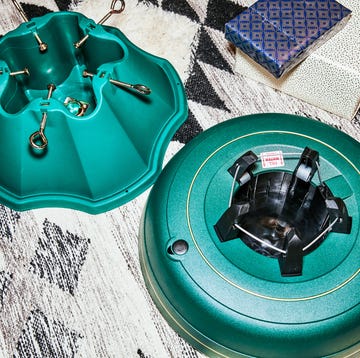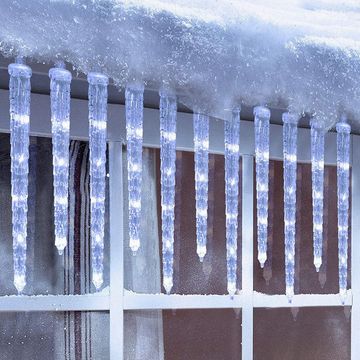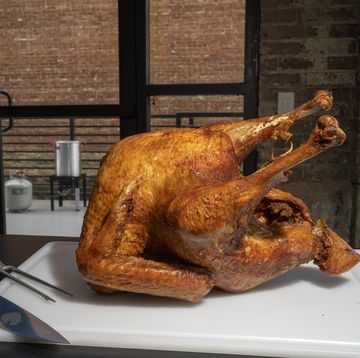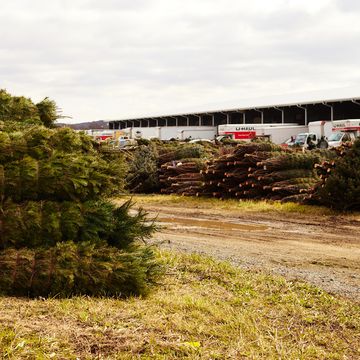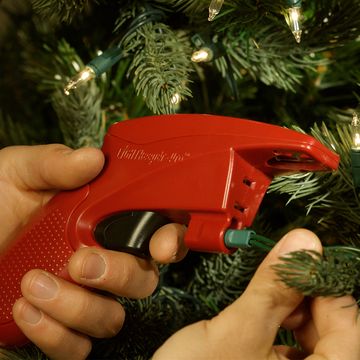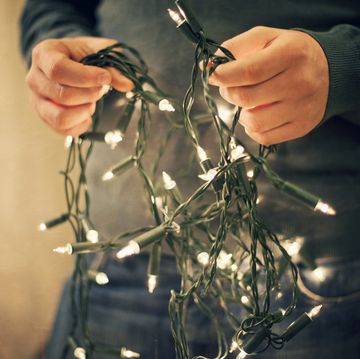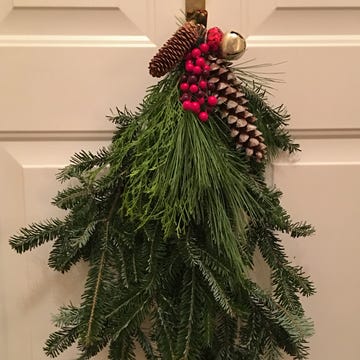If you’re one of the nearly 30 million households who will be getting a live Christmas tree this year, it’s important to keep the tree fresh throughout the entire holiday season. A fresh tree not only smells nicer than a dry, brittle tree, but it’ll also drop fewer needles, remain greener longer, and pose much less of a fire hazard.
There are a few simple steps to help keep your Christmas tree alive for longer, and ensure your tannenbaum doesn’t become a tannen-bummer. (A tannenbaum, by the way, is a fir tree.)
🔨You love badass DIY projects. So do we. Let's build some cool stuff together.
1. Pick the freshest tree possible.
This is the most important step for keeping a Christmas tree alive. The very best way to ensure your tree is fresh is to cut your own from a local tree farm. “A cut-your-own tree guarantees freshness, and by going to a local farm, you know it’s going to be sustainable, so trees will be replanted, and it’ll be a selective harvest,” says Mark Derowitsch, a spokesman for the Arbor Day Foundation.
Buying local also means, you’ll preserve local jobs and open space, and cut down on shipping costs—not to mention the carbon emissions of long-distance truck transport. And if you have a choice of Christmas tree farms, choose an organic farm, which doesn’t use harmful pesticides or chemicals.
If you’re buying a pre-cut tree from a retail store, church group, or scout troop, ask how long ago the trees were harvested and where they came from. Many Christmas trees are harvested weeks in advance and shipped long distances to local markets. If the trees were cut more than three to four weeks ago, shop elsewhere. Be sure to inspect the tree by feeling its needles, which should be pliable and firmly attached. Avoid any tree with dry and brittle needles.
Here’s another good indicator of freshness: Lift the tree several inches off the ground and firmly bang it on the ground. If a shower of needles drops off, keep looking.
2. Show your tree some TLC immediately.
Once you’ve selected your live tree, you’ll need to take care of it immediately to keep it alive. Tchukki Andersen, a staff arborist for the Tree Care Industry Association, suggests wrapping it in a plastic tarp to protect it on the journey home. If you bought a pre-cut tree, when you get it home, use a handsaw or chainsaw to make a fresh cut to remove about an inch or so of wood from the bottom of the trunk.
That’s important, because once a tree is cut, sap leaks out, dries, and seals the wood’s pores, greatly hindering its ability to absorb water. According to Andersen, it takes less than three hours for sap to seal the pores. If you live reasonably close to where you purchased the tree, you can ask the seller to cut it for you.
To further enhance the tree’s ability to soak up water, drill a ¼-inch-diameter hole straight up the center of the fresh-cut end. If you have a center pin stand, and already had your trunk drilled, you can add another, off center.
3. Water your tree the right way.
As soon as you get home, be sure to put it in water if you want to keep your Christmas tree alive. Either set the tree into its stand or place it in a bucket of water if you’re not going to decorate it right away. You can do everything right up to this point, but still end up with a dried out tree if you don't check the water level every day. In fact, a recent University of Wisconsin study confirms that watering works. A Christmas tree typically absorbs about one quart of water for each inch of its diameter. So, a tree with a 4-inch-diameter trunk will soak up a gallon of water every day.
If you can't check the water level daily, there are automatic Christmas tree watering systems. The more expensive models use a reservoir and pump to keep your stand full, the less expensive ones work by utilizing a syphon from a reservoir.
4. Feed the tree.
Andersen points out that some people swear by commercial Christmas tree preservatives, which can be mixed into the water in the stand. Others have said that they’ve had success by mixing a tablespoon of corn syrup or sugar into the water as a food source for the tree. Some people even add aspirin to the water.
However, the jury is still out on additives with some experts arguing that such substances are unnecessary for keeping your Christmas tree alive.
5. Choose the right location for the tree.
When setting up your Christmas tree, remember to keep it well away from heat sources, including heat registers, fireplaces, wood-burning stoves, space heaters, and south-facing windows, as these will accelerate the drying process.
Use a digital hygrometer to check relative humidity in the room with the tree. The ideal wintertime humidity should be around 40 percent. If the room is too dry, use a room humidifier to add a little moisture to the air. That’ll keep the tree fresher longer.
Be sure any lights you put on the tree are in good working order and are specifically designed for decorating Christmas trees. New LED (light-emitting diode) holiday lights are very affordable, long-lasting, highly energy-efficient, and they stay cool, so they reduce the risk of fire. If using older lights, keep an eye out for cracked bulbs and loose or frayed wires, before using them on your tree.
And this may seem obvious, but never place an open flame anywhere near the tree. According to the U.S. Consumer Product Safety Commission (CPSC), there was an annual average of 100 Christmas tree fires and 1,100 candle fires from 2015-2017. This resulted in 20 deaths, 160 injuries, and about $50 million in property damage each year.
6. Say goodbye to your tree—the right way.
Once the holiday season is over and you’re done with your tree, don't just drag it to the curb where it’ll end up in some landfill. Instead, recycle it!
Most cities now have programs that collect Christmas trees and grind them into mulch, which is then available for free to homeowners. Or, rent a chipper/shredder and grind your tree into mulch, which you can then spread over flowerbeds and gardens, and around trees.
A chipper/shredder rents for about $80 to $100 per day, but you can offset that cost by splitting it with several neighbors.
Now watch This:
Joe is a former carpenter and cabinetmaker who writes extensively about remodeling, woodworking, and tool techniques. He has written eight books and is a contributing editor to Popular Mechanics. He also appears on the Today’s Homeowner TV show, and co-hosts the weekly Today’s Homeowner Radio Show. Joe writes from his home in Roxbury, Connecticut.
